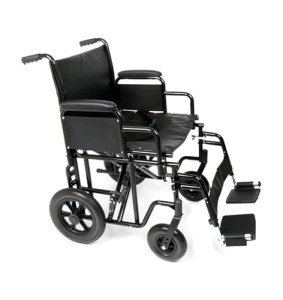Additional Wide Bariatric Wheelchair With 24" Seat
Frame

Wheelchairs are normally produced in a basic width of 16" (narrow adult), 18" (basic adult) or 20" (broad adult). However, some wheelchair users need a seat width wider than these standards. click the next internet page are typically fitted by an expert and based on the user's measurements.
In order to get the most comfortable and safe trip for passengers, it is necessary that wheelchairs are effectively sized. This implies that the wheelchair must have the ability to accommodate the user's size while having the ability to maneuver in tight areas. This is why BriteLift uses tailored cars to transport wheelchair passengers. This consists of vans that can safely drive and navigate big wheelchairs, enabling them to feel safe and comfortable in every ride. This is the only method to provide the most effective transport for wheelchair passengers.
Seat
Bariatric wheelchairs are bigger than standard wheelchairs and are designed to accommodate people who are heavier or broader. This additional broad bariatric wheelchair from Medline features a 24" seat and a carbon steel frame with rust- and chip-resistant chrome plating. The wheelchair has tool-free push-button adjustable footrests and easy-to-clean vinyl upholstery. It can support up to 500 lbs.
When choosing on the right wheelchair width, it is essential to measure the user sitting generally on a flat surface area throughout their widest part of the lap which is generally their hips. It is likewise recommended that you utilize a yardstick instead of a measuring tape as it tends to provide a more accurate measurement. If the user will be wearing a winter coat then an extra 2" need to be contributed to the measurement of their seat width.
Weight Capacity
A bariatric wheelchair is usually bigger and heavier than basic wheelchairs. This is why they require more mindful maneuvering. Drivers require to be trained in managing these guests. Furthermore, vehicles require to have adequate room for these chairs as well as ramps and wheelchair lifts. In addition, they require to understand how to arrange these trips ahead of time.
When choosing the chair width, it is very important to measure the user's best point in the seat, which is typically the hips. Many wheelchair producers likewise use a yardstick that can be used to help with this measurement. When determining an individual's width, it is best to take the measurement straight across and not wrap the tape around their hips which can provide an incorrect reading.
Sometimes, the largest part of an individual's thighs might be broader than their hips so this need to be thought about when choosing the chair width. In these circumstances, it is often necessary to add an extra 2" to the chair width.
In basic, the weight capacity of a bariatric wheelchair should not be exceeded under any situations or serious injury might result. When using the chair, always make certain that it is on a stable and level surface area with front casters pointing forward and wheel locks engaged. In addition, never ever lean or move the center of mass while sitting in the chair.
